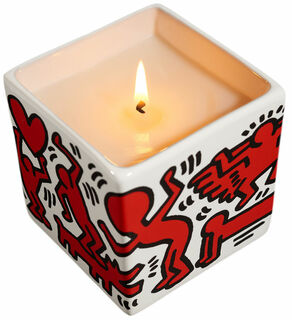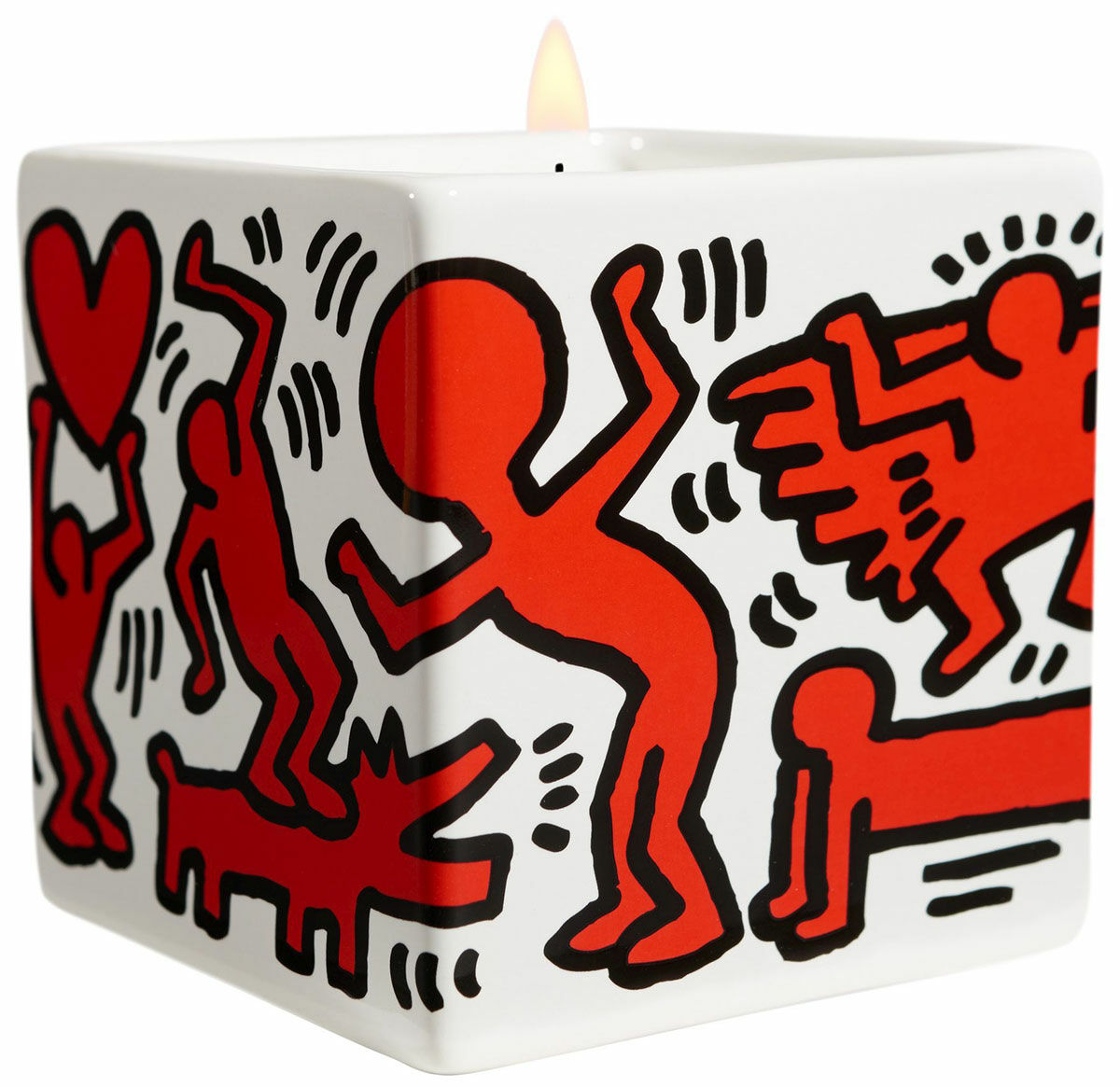Scented candle in porcelain bowl "Red on White"
Scented candle in porcelain bowl "Red on White"
Quick info
porcelain | signature | Ø 9.5 cm | height 9 cm | incl. gift box
Detailed description
Scented candle in porcelain bowl "Red on White"
Scented candle in a porcelain bowl featuring the motif "Red on White" from the artwork of Keith Haring. Created in an exclusive collaboration with the Keith Haring Foundation and Ligne Blanche Paris. © Keith Haring Foundation, licensed by Artestar. Scent: "Spicy Plum". Size 9 x 9.5 x 9.5 cm (h/w/d). Signature of Keith Haring on the back. Shipped in an attractive gift box.
About Keith Haring
1958-1990
In New York City in the 1980s, an art movement emerged from the obscurity that continues to inspire young artists today with its anarchic character and memorable visual language: With Keith Haring's graffiti, street art was born and his unmistakable figures became part of mass culture.
Graffiti is the colourful symbolic painting of public outdoor spaces, which today is part of our daily lives and often considered a nuisance. Already in the 1970s, young people sprayed words, logos and thickly outlined comic-like figures on the walls of New York subway stations to express their social protest.
Keith Haring, born in 1958 in Kutztown, Pennsylvania, could identify "with the style, taste and colour" of these artists. In 1981, he began his graffiti work in the New York underground after studying art at the School of Visual Arts in New York and Pittsburgh in the late 1970s. He was therefore not one of those artists who started as a street artist and then was discovered, he rather used the streets as a canvas as a trained painter.
He shared his penchant for evenly filling the picture surface with rapport-like sequences of figures with his role models from American abstract expressionism. After his appearance at the documenta in Kassel in 1982, he became friends and collaborated with the Pop artist Andy Warhol.
Keith Haring commercialised his style in his Pop Shop, which opened in 1988. There he primarily sold his motif of the agile "Radiant Child" baby figure radiating joie de vivre and optimism as T-shirt prints. He also used his artistic success to push through unusual concepts.
Keith Haring had been infected with immunodeficiency AIDS and drew attention to this disease in numerous campaigns. Keith Haring died of AIDS-related complications at the age of 31.
In the early 1950s, a movement took over the cultural scene. Young artists from the US and the UK - completely independently of each other - severed their ties with all the traditions of artistic creativity and helped modernity to achieve a new art movement.
In the US there were Roy Lichtenstein, Andy Warhol, Tom Wesselmann and James Rosenquist who were seeking their themes in the world of advertising and comics, in star cult and anonymous urban culture. With flash colouring, over dimensioning and manipulating depth perspective they created new provocative works. thanks to the famous exhibition "This is Tomorrow" at London's Whitechapel Art Gallery, Richard Hamilton and Eduardo Paolozzi are to be considered as the true pioneers of Pop Art in England. In the 1960s, they were followed by David Hockney, Allan Jones, Peter Phillips and Derek Boshier.
Ceramic product made of kaolin, quartz and feldspar.
Porcelain is formed by turning or pressing and figurative objects are cast. Complex objects have to be cast in separated steps and sections and then "assembled". After the moulding, the pieces are dried and "annealed" at about 900 °C. Next, the glaze will be applied and fired at temperatures between 1,240 °C and 1,445 °C. In renowned manufactures, the porcelain is painted by hand whereby each colour has to be fired individually and in compliance with narrow temperature tolerances.
Porcelain was invented in China and became widespread in Europe from the 16th century onwards. The first European porcelain factory was founded in Meissen, Germany in 1710.
Other famous European porcelain factories include Fürstenberg, Höchst, Schwarzburger Werkstätten, Lladró, Nymphenburg, KPM, Augarten, Sèvres, Limoges, Royal Copenhagen, Worcester. Individual factories label their products with their personal porcelain stamps so that for the collecter it is easy to identify their origin.






